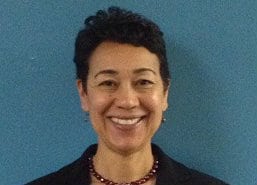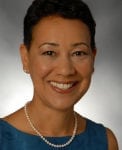How can we best use the voices and input of students, via student surveys, to improve teaching and learning? That was the focus of a recent AYPF study tour to Denver, Colorado. Weighing in on the conversation were state and district personnel, teacher union representatives and teachers, as well as students. Some key take-aways? Integrating student voices requires clear messaging, building buy-in, time and trust, and closing the feedback loop.
We learned about the integration of student voices through a focus on the Student Perception Survey (SPS), which measures teachers’ performance in four domains, mapped to the teacher quality standards in Colorado. The domains include: 1) student learning, 2) student-centered environment, 3) classroom community, and 4) classroom management. We also heard about the student survey used by Denver Public Schools. The survey was developed by the Colorado Education Initiative (CEI), following the adoption of Senate Bill 191 in 2010, and it enables student feedback in the classroom.
Messaging
During the trip, The Colorado Department of Education (CDE), CEI and the Colorado Education Association (CEA) emphasized the importance of explaining why the student surveys are an important factor in teacher growth and development. Amy Lobue, Director, Research and Impact, CEI, noted that surveys can provide actionable feedback that could inform teacher practice. She added that as students are in classrooms every day, they are able to give a comprehensive view of classroom practice from their perspective and let teachers know how they learn best. Survey data also provides a window into trends at the school and district levels. In some districts, communication about the importance of the surveys was tied to district values, such as equity.
Yet even as time and effort are expended on getting the messaging right, room for improvement remains. Students we met with in one district acknowledged they did not really know what the survey was about or for, and sometimes they found out about survey administration at the last minute, along with teachers.
Partnerships are essential to building buy-in
Teachers in CO were understandably nervous about not only a new accountability system being put into place, but also new standards being implemented at the same time. Thus it was vital for the teachers union to work closely with CDE and CEI to communicate where the survey fits into this landscape. Working together, they conducted focus groups and provided a consistent message to teachers that the surveys are about improving teacher practice and are part of a larger accountability system focused on professional growth. As Linda Barker, Director of Teaching and Learning, CEA commented, “What this can’t be is one more thing on top of a complex system; it must be an integral part.” She also emphasized that they say to teachers, “It’s not about you, but about your practice.”
Equally important in this local control state was the message that “you decide what it looks like at your district,” making district leadership and buy-in essential. These evident partnerships do not mean all questions are resolved, however, as they are still grappling with how the data that is being collected will be used. Ongoing conversations thus remain important.
Ensure sufficient time – for refining and administering the surveys, and examining the data
“It takes time to do all this,” Linda reminded us. That recognition drove the implementation process, with CEI piloting the surveys in 2011-12 in 13 districts, and then refining the documents. In 2013-14 none of the ineffective ratings on the survey counted, to allow teachers and administrators to become comfortable and familiar with the process.
At the school level it also takes time to implement the surveys, sparking discussion about how often to administer the surveys (for most schools once a year), how long they should be, and which students to elicit feedback from.
Once teachers receive their data, they need time to reflect on it and figure out what to do with the information, and they are assisted in this by Educator Effectiveness Coaches. By the second year, many teachers realized they could share pieces of the student perception survey as part of their evaluations, and in the third year of implementation, teachers are now writing goals based on the SPS. One coach noted that “teachers are now owning the results,” providing momentum to the district’s ongoing efforts on how best to organize professional development based on survey information.
Close the feedback loop!
“We think we are doing things, but kids don’t see that,” one district coach commented. Many of the students we met with commented that, while they valued the chance to give feedback to teachers, they would be more invested in the process if they saw a subsequent change in teacher behavior based on student feedback. They want to know they can have an impact and that their opinion matters and emphasized that teachers need to be willing to listen to the feedback.
Students also worry about taking the survey, concerned they will hurt teacher feelings, or negatively affect their grades. In Denver Public Schools, students and teachers are working with Project Voyce, a Denver-based non-profit, to facilitate the discussion of survey results with teachers, and this is having a positive impact on how teachers are responding to survey information.
The use of surveys to inform teacher development is burgeoning, yet many questions still remain, focused on how best to inform teacher professional learning plans, how to provide surveys to districts with fewer resources, and how to integrate survey use with pre-service teachers. We look forward to hearing your thoughts on these issues …




